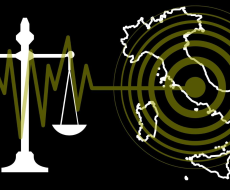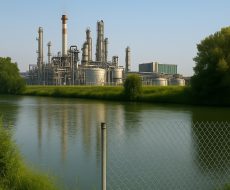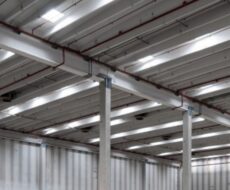
July 7, 2023
Difference between dissipative and non-dissipative anti-seismic restraints: characteristics and applications
In structural design for seismic safety, dissipative and non-dissipative anti-seismic restraints play a crucial role. In this article, we will explore the key differences between these two types of restraints, focusing on the characteristics that distinguish them and the specific applications in the seismic protection of structures field.
Dissipative anti-seismic restraints and their characteristics
Dissipative anti-seismic restraints are designed to absorb and dissipate seismic energy through plastic deformation or viscous dissipation mechanisms. These restraints offer dissipative capabilities, adjustability of structural performance and contribute to the overall efficiency of the building. Their energy dissipation capacity makes them suitable for protecting critical structural elements and for optimising seismic performance.
Non-dissipative anti-seismic restraints and their characteristics
Non-dissipative seismic restraints, on the other hand, focus on limiting unwanted movements and deformation of the structures during and earthquake. These restraints offer rigidity, strength and transfer of seismic forces to the foundations. They are used to stabilize the structure and protect against seismic stresses, working in synergy with other structural elements.
Differences between dissipative anti-seismic restraints and non-dissipative anti-seismic restraints
The main differences between dissipative and non-dissipative anti-seismic restraints lies in the seismic energy management mechanism. Dissipative seismic restraints are specifically designed to absorb and dissipate seismic energy, reducing the build-up of stress in the structure. On the contrary, non-dissipative anti-seismic restraints are designed to limit the movements and deformations of structures, transferring seismic stresses to the appropriate elements (pillars and foundations).
While dissipative anti-seismic restraints offer energy dissipation capacity and structural performance adjustability, non-dissipative anti-seismic restraints focus on rigidity, strength, and transfer of seismic forces. Both types of restraints play a crucial role in seismic protection of structures and can be used in combination to further improve the overall seismic performance of the building.
The choice between the two types of restraints depends on the specific needs of the building, the site conditions and the desired seismic performance. The combined use of both types of restraints can help ensure effective seismic protection for structures.
The main differences between dissipative and non-dissipative seismic restraints can be summarized as follows:
- Dissipative capacity: Dissipative anti-seismic restraints offer an energy dissipation capacity, reducing the accumulation of stresses in structures. This characteristic makes them suitable for protecting critical structural elements and for optimising seismic performance. Non-dissipative anti-seismic restraints, on the other hand, do not have a specific mechanism to dissipate energy.
- Adjustability of performance: The dissipative anti-seismic restraints allow the adjustment of structural performance, so that the system can be adapted to the specific needs of the building and the seismic conditions of the site. Non-dissipative seismic restraints are primarily designed to provide rigidity and strength, with less capacity to adjust performance.
- Specific applications: Dissipative anti-seismic restraints are often used in buildings with high seismic exposure or with particularly critical structural elements, where energy dissipation is essential. Non-dissipative anti-seismic restraints are widely used to stabilize the structure and limit movements, for example for structural coupling of pre-fabricated concrete elements.
In conclusion, dissipative and non-dissipative seismic restraints have significant differences in how they manage seismic energy and affect structural behaviour during an earthquake. The choice between the two will depend on the specific needs of the building, site conditions and desired seismic performance, and may require the combined use of both to maximize the seismic safety of structures.
During their ten-year experience, Seriana S.p.A. has participated in countless different interventions, where it was necessary to choose the appropriate type of restraint depending on the situation. The skills acquired during all this time have made the company a specialist in this type of intervention, allowing it to provide tailor-made solutions based on the company context.






